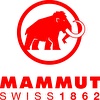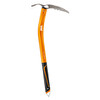Coffee Break - Chogolisa's roof

 1 / 1
1 / 1 Aitor Las Hayas' / Immagini a cura di Maxime Guitton
Aitor Las Hayas' / Immagini a cura di Maxime Guitton
Maxime Guitton: My relationship with the mountains has certainly to do with my upbringing and my being an urbanite. Growing up in the very north of France, where the land is invariably flat, I got the chance to ski and hike in the mountains throughout my childhood, nearly twice a year, which indisputably nourished a taste for mountains, without my even noticing it as a teenager.
After years of living in Paris, with no real practice of the mountains or any outdoor activity whatsoever, I remember feeling one day a pressing and physical need to reconnect with the Alps and the Pyrénées, the two mountain ranges I was familiar with. That’s when I started hiking with friends every summer and developing the rest of the year a kind of literate and iconographic bond with the mountains, being stuck in my everyday life in Paris.
To further characterize this relationship, I would say that it is an indisputably incomplete bond, or rather, a bond which is partly rooted in the experience and partly fantasized: I do not do rock nor ice-climbing and, aware of my capacities, I feel more comfortable with hiking, whereas much of my readings, interest and work, as a curator and programmer, lies in (the history of) mountaineering, as if I was separating my experience and my knowledge of the mountains into distinctive ranges, layers and realms: and I actually find it comforting to keep in mind that there are mountains, peaks, and ridges I know much about that I will never put my feet and my hands on, leaving them to the alpinists, the explorers.
And I use the word "comforting" as in any of my intellectual or cultural interests, I know that I can’t help but do something out of them: the "material" that I collect through books, films, etc. needs to be converted, shaped into writing, lecturing, programming, enthusing. As much as I can, I try to keep away from any sterile / encyclopaedic "hoarding" of information and rather turn it into a social activity which can possibly benefit to other people.
D.Z.: You tell me "I started reading a lot and watching a lot of documentaries and films about mountains"… and I remember I spent an entire summer in the attic of my mother reading climbers’ diaries, alpinism stories, biographies, historical notes, … I think also to Werner Herzog, to old documentaries, to images, videos.
What are you searching for?
M.G.: Basically, I think that what I’m looking for is dots so that I can draw lines and eventually map a dense web of facts. My background as a history student certainly has to do with this approach. Truth is, I am drawn to leave room for perspective, historical distance. However, what has recently been driving my interests for mountains lies in a pragmatist approach, if I can pompously call it this way. That is: an approach which, no matter how informed it still is by history, tries to connect the mountains as a set of geological/historical/cultural facts with human experience.
Basically, I’m interested in what mountains "make human beings do": human beings paint, draw and photograph the mountains, write about them, make up stories and myths about them, climb them, dream about them, study them, collect data about them. They sometimes get killed by them.
For instance, I’ve been lately working on the specific case of the Eigerwand, the infamous northwest face of Eiger in the Bernese Oberland. In my mind, the Eigerwand can exemplify how a mountain can set into motion cultural artefacts – the northwest face has been massively demonized, magnified, fictionalized through drawings, tales, legends, journalistic accounts, mountaineering books, etc. – and how in return, as a retroaction loop, mountains as fictions have tangible and sometimes tragic effects on human lives. In a way, human beings draw mountains but they are ultimately drawn to them. It is also interesting to me to examine how this narrative has a lingering effect up until the present time, even if the Eigerwand has now barely nothing to do with the once monster face it used to be.
D.Z.: It seems that mountaineering has something to do with the past. Sometimes it seems that even mountains are a reflection of "another time". But I think that there is something, in all this, necessarily contemporary. You’ve just been to the Venice Biennale. And then between the Dolomites. Perhaps you will be able to glimpse even more about it.
M.G.: Whatever my natural inclination for history may be, mountains definitely have to do with the past, and are the brutal, magnificent and humbling reminders of geological and historical times, that is: scales of time which exceed a lifetime experience. That said, and as I was saying above, mountains do have effects on people’s lives, beliefs, ways of expressing themselves and questioning the world. It’s no surprise that they still resonate with our present time, and noticeably with contemporary artists.
With much precaution, I tend to understand this interest for mountains by a new generation of artists through the filter of climate change, a soaring interest for anthropenic studies, a renewed interest for the representation of landscapes and panoramas, a fascination for geological, mineralogical, geographical and cartographical models – that is for a cross-pollinated approach between art and science. It may sound anecdotal, but haven’t you noticed the semantic changes that the contemporary art gabbling has operated through the recent years? For instance, some artists no longer "question the history" but rather explore the "archaeology" or excavate the buried layers of meaning of our present time (and future).
As if some artists were tempted to drill deeper, look further back in time, and occasionally go higher, for better understanding our current world. In that respect, mountains may be a perfect playground for these artists.
D.Z.: Tell me about "your mountain". Draw it to me.
M.G.: If mountains were a provider of forms, a repertoire of shapes, which I tend to view, I would say that certain types of mountains particularly fascinate me.
Namely, and if I had to pick one mountain, I have to say that I do feel attracted by the Chogolisa peak (over 7600 m), with its distinctive prism-shaped mountaintop, almost "unnatural" level summit ridge, about 15 km southwest of the Gasherbrum group, near the Baltoro Glacier, in the Karakoram (Pakistan).
In the image I sent you, it really looks like the manmade serene roof of a house over an ethereal sea of clouds.
Maxime Guitton is in charge of the Soutien à la création, a service which supports contemporary creation through grants and funds to visual artists, publishers, art dealers, art critics and film producers at the Centre national des arts plastiques (CNAP) in Paris. Since 2003, he has been developing free-lance music programming activities in a variety of independent venues, art spaces and museums (Le BAL, CAPC, Centre Pompidou, etc.). He has been assisting composer Eliane Radigue between 2009 through 2011. His fields of research have led him to be invited by art schools and institutions for classes, workshops, lectures and listening sessions in France and Switzerland (ECAL, Ecole du Magasin, INHA, Bétonsalon, Musée de la Main UNIL-CHUV, etc.). In 2014, he curated Melissa Dubbin and Aaron S. Davidson's solo exhibition, "a drusy vein" (Treize, Paris). Along with Benoît Hické, he completed in 2015 the programming of "Montagnes: la terre exhaussée", a cycle of film screenings, lectures and acousmatic diffusion about mountains at the National Museum of Natural History (Paris).
>>> All Coffee Break articles
| www | |
| www.cnap.fr | |



 Copia link
Copia link
























